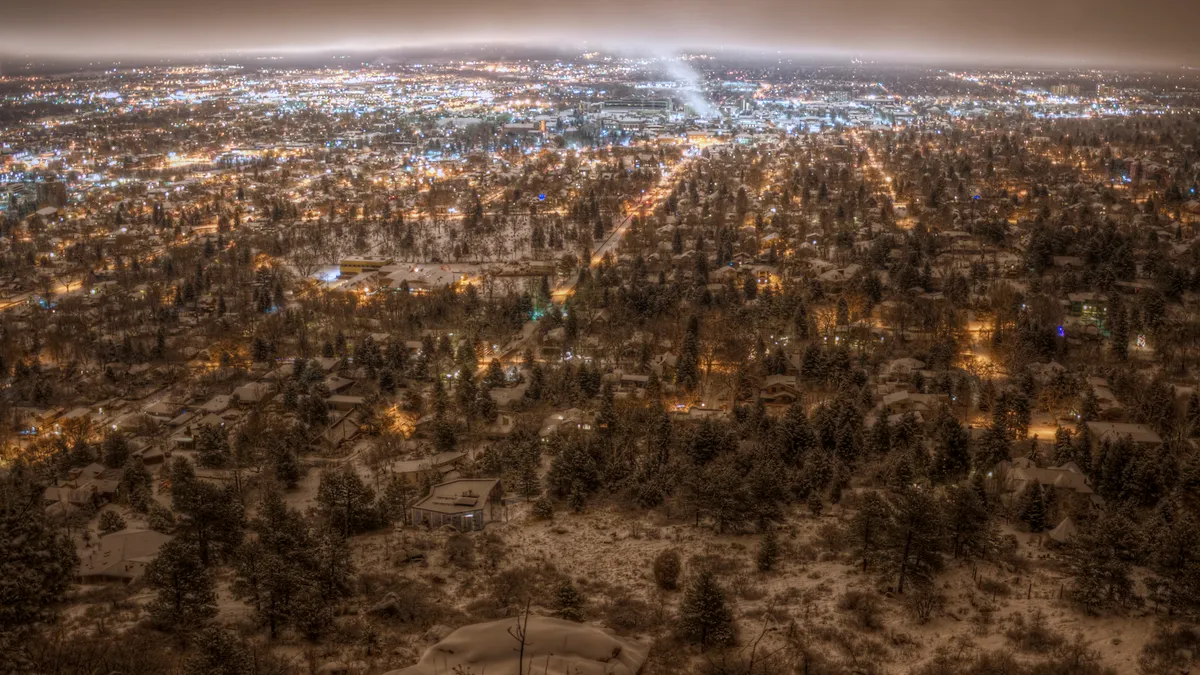Dive Brief:
-
Distributed solar and storage could provide resiliency benefits and address transmission congestion in Mountain West states — but there's room for utilities to coexist with distributed energy resources and thrive in that landscape, industry experts said Monday at the Solar Power and Energy Storage Mountain West conference in Denver.
-
Colorado is a key part of the Mountain West Transmission Group's service territory, and finding a win-win situation for utilities and developers in the state is "imperative" for deploying community solar as well as solar-plus-storage, according to Taylor Henderson, chief energizing officer at Outshine Energy.
-
The state's regulators are considering setting distribution planning requirements for utilities. The Colorado Public Utilities Commission (PUC) last year opened the distribution system planning proceeding as directed by Senate Bill 19-236, and might issue a notice of proposed rulemaking after reviewing stakeholder input.
Dive Insight:
Efforts like the Colorado PUC's distribution planning docket are important to help deploy distributed solar and storage in a smarter way that benefits the grid, Sean Gallagher, vice president of state affairs at the Solar Energy Industries Association, told Utility Dive.
Solar, particularly when it's paired with storage, can contribute to grid reliability “and I think distributed resource planning is a really important way to help us figure out, okay, how much solar capacity can we really accommodate, where's the best place for it, how can we capture this value," he said.
States in the Mountain West transmission group have a mixed record on distributed generation. "There's a big lesson for community solar advocates" in New Mexico this year, where a couple of proposed community solar bills didn't make it over the finish line, according to Sarah Cottrell Propst, cabinet secretary of the New Mexico Energy, Minerals and Natural Resources Department
“Part of why that happened is because there were several different ideas about why this was important,” she said at the conference — for some, it was about cleaning up the grid, while for others, distributed generation could present a different business model.
“And then there also has been a school of thought that these projects are for low-income customers, and I think they can be designed and developed to accommodate that a little bit — but I think we have a lot more negotiations to do with the utilities on how that would actually look,” she said.
Behind-the-meter storage is still a nascent sector in Colorado, according to Mike Kruger, president and CEO of the Colorado Solar and Storage Association, but could potentially play a role in solving transmission congestion.
“That is maybe the next big use case for energy storage here,” he said.
Colorado Gov. Jared Polis last year released a roadmap to take the state to 100% renewable electricity by 2040, as well as signing legislation to decarbonize the state's economy 90% below 2005 levels by 2050.
But there's room for utilities to co-exist with distributed resource deployment, panelists said. Colorado has ambitious clean energy goals over the next decade — “and as much as I would love to install that much distributed solar, I'm not sure there's even enough rooftops for us to do that,” according to Kruger.
The Colorado PUC also launched a proceeding last year to consider performance-based ratemaking, which will consider whether current models should be changed, he said.
“One could imagine that if the commission felt they had the authority to do so, to move in that direction, you'd see a lot more incentive for at least IOUs to add … distributed solar and storage if they find a way to get paid for it,” he continued.
In Arizona, there is a lot of discussion around behind-the-meter solar and storage aggregation, and how aggregators can work with utilities to provide value, Court Rich, vice president of the Arizona Solar Energy Industries Association, said, adding, “I think eventually [the utilities] will see the value of that.”















